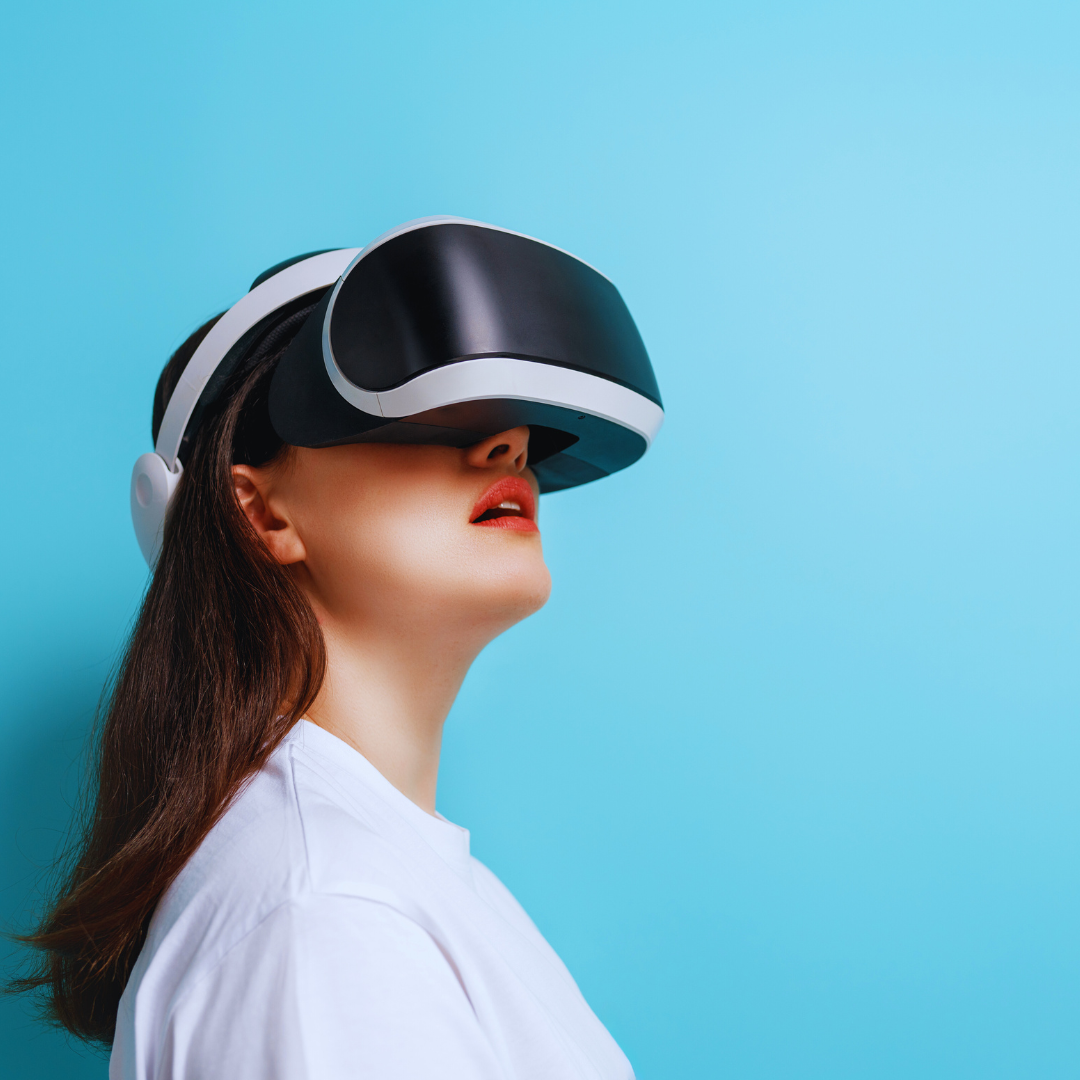
The Rise of Virtual Reality: Future Prospects for Entertainment and Business
The evolution of virtual reality (VR) has transformed how people engage with entertainment and conduct business. From immersive gaming experiences to virtual meetings that eliminate geographical barriers, VR technology continues to push the boundaries of what is possible. As VR becomes more accessible and user-friendly, its applications in entertainment and business are expected to expand dramatically, reshaping these industries.
In entertainment, audiences are no longer limited to traditional viewing experiences. VR offers them the ability to step into interactive worlds, experiencing stories and events from a new perspective. Businesses are also leveraging this technology, creating virtual environments for training, marketing, and customer engagement that enhance their operational efficiency and customer satisfaction.
As companies invest more in VR development, viewers and consumers can anticipate innovations that will redefine interaction. The combination of immersive technology with advancements in artificial intelligence and haptic feedback signals a future where virtual experiences are indistinguishable from reality.
The Evolution and Market Growth of Virtual Reality
The development of virtual reality (VR) has shifted the landscape of entertainment and business. Innovations in technology, alongside significant market growth, continue to shape the future of immersive experiences.
Key Innovations Driving VR Technology
Key innovations have played a crucial role in the evolution of VR technology. Significant advancements in graphics processing, display resolutions, and tracking systems enhance realism.
- Graphics Processing: Graphic cards have improved, supporting high-definition experiences.
- Display Technology: OLED and LCD advancements provide sharper images and reduced motion blur.
- Tracking Systems: Inside-out tracking and motion sensors allow for more immersion and movement freedom.
These innovations have positioned VR as a viable platform for diverse applications. As technology advances, the quality and accessibility of VR experiences continue to rise.
Market Trends and Value in the VR Industry
The VR market has experienced remarkable growth, with estimates showing an expected CAGR of over 30% in the coming years. By 2025, the market value is projected to surpass $44 billion.
Key trends include:
- Increased demand for VR in gaming, training, and remote collaboration.
- Adoption by businesses leveraging VR for marketing, design, and employee training.
- A growing consumer market as hardware becomes more affordable.
Companies like HTC and Oculus are driving this growth with competitive offerings, catering to both gamers and professionals. As user experiences improve, VR’s integration into everyday life expands.
The Role of Hardware: Headsets, Sensors, Controllers, and Gloves
Hardware serves as the foundation for VR experiences. Headsets, such as the HTC Vive and Oculus Quest, are pivotal in delivering immersive content.
Essential Hardware Components:
- Headsets: Provide the primary visual experience, featuring options for mobile and tethered devices.
- Controllers: Enable interaction within VR environments, enhancing user engagement.
- Sensors: Track user movements and establish spatial awareness, vital for immersion.
- Gloves: Advanced haptic feedback gloves offer tactile interaction, simulating touch in virtual spaces.
As technology progresses, these hardware components enhance the quality and range of VR applications, making experiences more compelling and user-friendly.
Virtual Reality Transforming Entertainment Experiences
Virtual reality is reshaping the landscape of entertainment by offering immersive experiences that engage users like never before. From gaming to virtual events, VR transforms how content is consumed and interacted with, fostering deeper emotional connections and social interactions.
The Evolution of Gaming and Immersive Entertainment
The gaming industry has embraced VR technology, leading to the development of fully immersive games. Unlike traditional gaming consoles, VR systems provide players with a 360-degree experience.
This immersive capability extends beyond traditional video games, revolutionizing sports and recreational activities. For instance, virtual golf facilities leverage advanced simulators to offer a realistic and engaging experience, allowing enthusiasts to play on world-renowned courses regardless of weather conditions.
These high-tech environments provide a year-round solution for golfers of all skill levels, fostering competitive leagues and tournaments. Such innovations demonstrate how VR transforms physical sports into accessible, interactive entertainment, making indoor golf in Edmonton, or elsewhere, a popular choice for local enthusiasts.
Key aspects include:
- Increased Presence: Players feel as though they are inside the game world, enhancing emotional engagement.
- New Genres: VR has birthed genres such as escape rooms and virtual simulations, broadening gaming horizons.
- Enhanced Interactions: Immersive gaming allows for physical movement and gestures, creating a more realistic experience.
Game developers continuously explore innovative ways to leverage VR, transforming everyday gaming into rich, interactive experiences.
Interactive and Personalized Digital Content
Virtual reality enables tailored experiences that resonate with individual preferences. Developers utilize user data to create personalized content that adapts to the viewer’s interests.
Important features include:
- Adaptive Storylines: Users can influence narratives based on their choices, leading to unique outcomes.
- Customizable Avatars: Personalized avatars enhance identity and immersion, making experiences more relatable.
- Emotional Resonance: Experiences designed for emotional impact can deepen users’ connections to the content.
As VR technology evolves, the potential for interactive digital content grows, promising even more engaging experiences.
Virtual Events and Social Interaction in Entertainment
VR is redefining social interactions through virtual events, allowing users to connect in shared digital spaces. These platforms host everything from concerts to art exhibitions, creating immersive environments for social engagement.
Key highlights include:
- Global Reach: Attendees from different locations can participate, removing geographical barriers.
- Enhanced Engagement: Features like real-time chat and avatar representation foster interactions among participants.
- Unique Experiences: Virtual events can incorporate innovative elements, such as interactive performers or 3D exhibits, enhancing overall engagement.
This approach to entertainment not only makes events more accessible but also enriches the shared experience in a virtual landscape.
Adopting Virtual Reality in Business Environments
Virtual reality (VR) offers innovative solutions for various business environments, enhancing training, collaboration, and customer engagement. Its applications span multiple industries, fundamentally transforming approaches to employee development, remote work, and customer interaction.
Training, Simulation, and Immersive Learning Applications
VR technology is increasingly used in employee training and simulation. Companies can create virtual scenarios that mimic real-life situations, allowing employees to practice skills without the risks associated with traditional training methods.
Industry leaders utilize immersive learning to enhance retention rates. Training programs in sectors like aviation, manufacturing, and emergency services benefit significantly.
Examples include:
- Construction: Workers practice safety protocols in a controlled virtual environment.
- Aviation: Pilots undergo simulated flight experiences to prepare for emergencies.
This technology not only improves skills but also boosts confidence and decision-making.
Collaboration and Remote Work Solutions
VR enhances collaboration in remote work settings. Employees can engage in virtual meetings that simulate in-person interactions, improving communication.
With tools like virtual meeting rooms, companies foster teamwork across geographical boundaries. Participants can interact with digital twins of products, offering a more tangible experience.
Key benefits include:
- Enhanced Engagement: Employees feel more connected in a shared virtual space.
- Visual Data Representation: Complex data can be visualized and manipulated, aiding discussions.
These tools support more effective decision-making and problem-solving among teams.
Virtual Reality in Retail, Real Estate, and Manufacturing
In retail, VR transforms customer experiences by allowing virtual try-ons and product demonstrations. Shoppers can visualize products in their own homes before purchase.
Real estate professionals utilize VR for property tours. Clients can explore listings remotely, making it easier to make informed decisions. This approach saves time and increases engagement.
In manufacturing, VR assists in:
- Design Visualization: Engineers can interact with digital models during the design phase.
- Process Training: Workers can learn machinery operation through virtual simulations.
These applications streamline operations and enhance customer satisfaction.
Healthcare Revolution: From Pain Management to Surgical Training
VR is revolutionizing healthcare by providing innovative solutions for pain management and surgical training. Pain management therapies employ VR to distract patients during procedures, reducing anxiety and discomfort.
Surgical training programs use VR to simulate complex procedures. Trainees practice skills in a risk-free environment, honing their abilities before working on real patients.
Key applications include:
- Exposure Therapy: Patients confront phobias in virtual environments, facilitating gradual exposure.
- Remote Consultations: Healthcare providers use VR to consult with patients, broadening accessibility.
This technology supports better patient outcomes and more effective training methodologies.
Emerging Technologies and the Future of Immersive Experiences
The landscape of immersive experiences is evolving with the introduction of advanced technologies. These developments in artificial intelligence, augmented reality, mixed reality, and networking are shaping the future of entertainment and business.
Integrating Artificial Intelligence, AR, and MR in VR
The integration of artificial intelligence (AI) into virtual reality (VR) creates dynamic environments that adapt to user behavior. AI algorithms can analyze user interactions to personalize experiences, enhancing engagement.
Augmented reality (AR) and mixed reality (MR) are increasingly being employed alongside VR. These technologies allow for the layering of digital content over the real world, offering applications in training and education. The combination can result in immersive simulations where users interact with both real and virtual objects seamlessly.
Advancements in Networking and Hardware for Enhanced VR
Faster networking technologies, such as 5G, significantly improve the performance of VR applications. Low latency and high bandwidth facilitate smoother experiences, reducing motion sickness and enhancing interactivity. This is crucial for multiplayer VR experiences where real-time communication is essential.
The demand for resilient connectivity goes beyond fixed installations, extending to mobile and distributed deployments where headsets, drones, or edge devices move across coverage zones. In such scenarios, enterprises often rely on solutions like Multi Network Sim Cards, which can provide automatic network failover and central SIM management to keep devices online even when individual networks falter.
Integrating managed multi-network SIMs can reduce downtime in field trials and improve the consistency of user experience during live or location-based VR events. This kind of infrastructure planning helps teams prioritise low-latency routing and predictable bandwidth for mission‑critical VR applications.
Hardware advancements, including lighter headsets and improved displays, also contribute to user comfort and visual fidelity. Innovations in haptic feedback also allow users to physically interact with virtual environments, making experiences more realistic.
Long-Term Impacts and New Business Opportunities
The rise of immersive technologies presents new business opportunities across various sectors. Companies can leverage VR for virtual training programs, reducing costs associated with traditional methods.
Moreover, the entertainment industry is exploring VR for unique storytelling experiences that engage audiences in novel ways. Businesses that adopt these technologies early can gain a competitive edge, driving innovations that redefine customer engagement.
As immersive experiences become more mainstream, their long-term success will depend on continued investment in technology and the ability to adapt to consumer preferences.
You May Also Like

Good Cat Food Options For An Alternative Diet
January 7, 2022
How to Train A New Puppy
October 29, 2023


